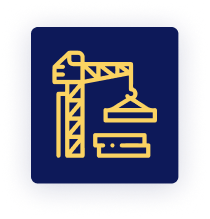- csem@csem.com
- (888)701-2736
- Special Treat
- What's New
JUST IN TIME
SAFETY TRAINING
24/7
MULTIPLE
LANGUAGE OPTIONS
888-701-2736
JUST IN TIME
SAFETY TRAINING
24/7
MULTIPLE
LANGUAGE OPTIONS
888-701-2736
SAFETY TRAINING
24/7
MULTIPLE
LANGUAGE OPTIONS
SAFETY TRAINING
24/7
MULTIPLE
LANGUAGE OPTIONS

Hazardous operational aspects pertaining to monorail cranes, monorails, top running single girder cranes and overhead hoists should be regulated under OSHA’s Overhead and Gantry Crane 29 CFR 1910.179 safety standard. These safety procedures must be observed by field staff. The Occupational Safety and Health Administration (OSHA) standards for overhead and gantry cranes state in Standard Number 1910.179(b)(8),
“Only designated personnel shall be permitted to operate a crane covered by this section”
Where “Designated,” as per 1910.179(a)(35), indicates those individuals who are deemed to be competent for operating an overhead crane for a particular application.
Accidents involving overhead and gantry cranes are typically caused by improper rigging and operator’s mistake. Therefore, effective crane and hoist operator training should be a top priority for every business that uses overhead cranes. This course fulfills this purpose by providing a comprehensive training curriculum to train relevant personnel.
This training program’s goal is to familiarize students with the particular machinery they employ as well as the controllers (radio, pendant, and cab), the surroundings, and the application, or the precise management of diverse loads while they are under the operator’s control. The course also enlightens them about safety measures and standards affecting handling of overhead and gantry cranes to be implemented at jobsite.

training requirements of 29 CFR 1910.120(e)(3)(i) defined by Federal OSHA HAZWOPER for general industry.

training requirements of 29 CFR 1926.65(e)(3)(i) defined by Federal OSHA HAZWOPER for construction sector.

HAZWOPER training requirements for EPA and State OSHA guidelines.
This training course is intended for all those personnel who use and operate hoists, overhead cranes, and related lifting equipment.
At the completion of this course, students will learn:

Introduction
Definitions
General Requirements
Cabs
Footwalks and ladders
Stops, bumpers, rail sweeps, and guards
Brakes
Electric equipment
Hoisting equipment
Warning device
Inspection
Testing
Maintenance
Rope inspection
Handling the Loadv
Other General Requirements